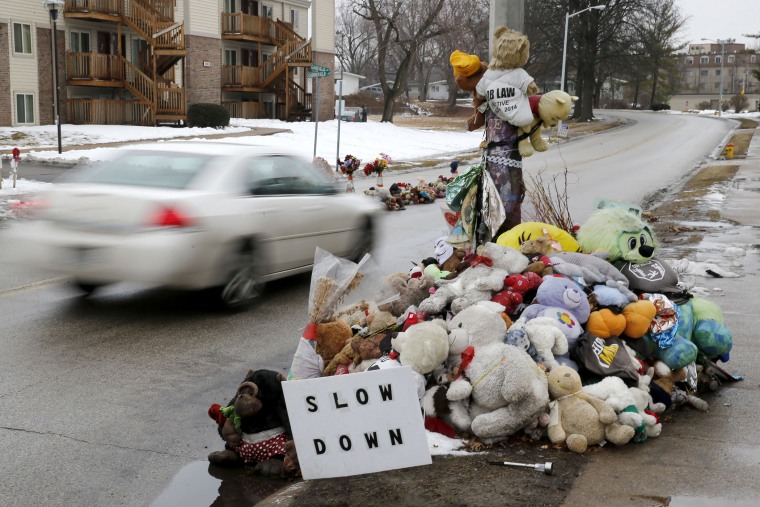The Department of Justice's extensive report on the death of Michael Brown backs up former Ferguson police officer Darren Wilson's version of events with the accounts of several predominately black eyewitnesses, and it reaches the conclusion that Wilson's use of deadly force on the unarmed teen on Aug. 9, 2014 was not “objectively unreasonable.”
The 86-page report released Wednesday recounts the grisly details of Brown and Wilson's two-minute long encounter and says that the ex-officer's testimony to authorities is consistent with the physical and forensic evidence.
READ: The full text of the DOJ's reports on Ferguson
"There are no witness accounts that could be relied upon in a prosecution to prove that Wilson shot at Brown as he was running away," the report states. The DOJ also confirms WIlson's claims that following a struggle in his police vehicle, and an aborted attempt to flee the scene, Brown faced and then charged the officer with the possible intent to kill.
"Under the law, it was not unreasonable for Wilson to perceive that Brown posed a threat of serious physical harm, either to him or to others. When Brown turned around and moved toward Wilson, the applicable law and evidence do not support finding that Wilson was unreasonable in his fear that Brown would once again attempt to harm him and gain control of his gun," the report said.
According to Wilson's testimony, which was reviewed by the Justice Department, after running about 20 to 30 feet from Wilson, Brown "abruptly stopped, and turned" and appeared "'psychotic," "hostile" and "crazy," as though he was "looking through" the officer.
The bulk of report -- which involved interviews with more than 300 people -- contains testimony from witnesses deemed "credible," who are mostly black and from all different age groups, that support Wilson's version of the events. Witness after witness describes Brown as "charging" or "moving fast" toward Wilson. And while Witness 107, for instance, was "unsure whether Brown was stumbling or running," the overwhelming majority of the people whose testimony was taken into account characterize the black teen as the aggressor in the Aug. 9 shooting death. In fact, Witness 108, who is described as a 74-year-old black male who was hesitant to testify for fear of neighborhood reprisal, is reported to have confided in a friend that he "would have f--king shot that boy, too.”
Another witness testified that he believed the additional shots fired by Wilson -- the report finds there was a total of 12 -- were "excessive," but according to the DOJ that opinion "would be inadmissible in federal court, and a misstatement of the applicable federal law."
Meanwhile, the testimony of Witness 101, the young man who accompanied Brown during an alleged robbery of a convenience store prior to his confrontation with Wilson, is largely discounted as not credible.
According to the DOJ report, "material parts of Witness 101’s account are inconsistent with the physical and forensic evidence, internally inconsistent from one part of his account to the next, and inconsistent with other credible witness accounts that are corroborated by physical evidence. It is also unclear whether Witness 101 had the ability to accurately perceive the shootings."
RELATED: How the crisis in Ferguson unfolded, in photographs
The report suggests that although Witness 101 was on the scene of the shooting he was crouched down behind vehicle when the fatal shots were fired, which may have impaired his perception of the event. Witness 101 has testified that Wilson initiated physical violence against Brown and also claimed that the teen had his hands up in surrender when he was killed, a narrative that largely inspired the protests in the wake of Brown's death and the symbolic "hands up, don't shoot" gesture popularized by activists.
However, the DOJ report found that, "Witness accounts suggesting that Brown was standing still with his hands raised in an unambiguous signal of surrender when Wilson shot Brown are inconsistent with the physical evidence, are otherwise not credible because of internal inconsistencies, or are not credible because of inconsistencies with other credible evidence." Autopsy results also confirm that Brown was not shot in the back while running away.
Ultimately because the DOJ concluded that Wilson did not act with criminal intent and believably perceived Brown as a deadly threat "it cannot be proven beyond reasonable doubt" that the former Ferguson cop violated federal law.
